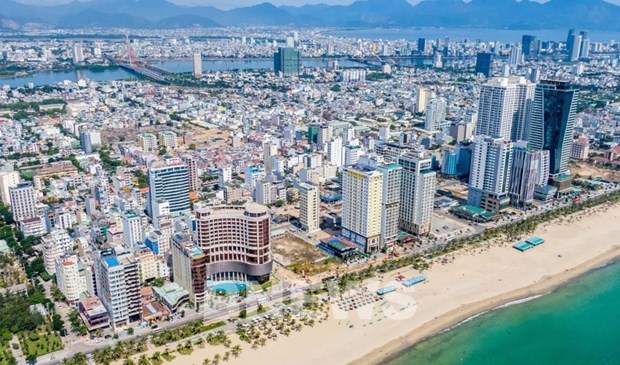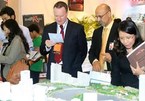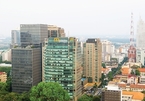 |
According to Savills Vietnam Managing Director Neil MacGregor, over the last 25 years, even amid economic crises, Vietnam has remained among the few countries sustaining relatively fast growth.
Since Savills Vietnam arrived in the country, he said he has long been impressed with the local property market’s development.
Explaining its history, he cited data from the General Statistics Office showing that Vietnam’s economy grew more than 9 percent in 1995 (9.54 percent) and 1996 (9.34 percent). Inflation, meanwhile, was curbed from 12.7 percent in 1995 to 4.5 percent in 1996 and 3.6 percent in 1997.
The strong GDP growth made people confident about a bright economic future, which fuelled real estate prices.
The market has experienced many ups and downs, beginning an upward trend in 2000 and booming in 2001 and 2002, when GDP rose 6.79 percent and 6.89 percent year-on-year, respectively.
This strong development continued in 2004-2007, when foreign capital was being continually channelled into real estate and State policies boosted the market.
Both prices and transactions surged in those years, making real estate an attractive investment channel for many. During the country’s two real estate “fevers” in 2001-2003 and 2007-2008, land and housing prices rocketed to levels beyond the reach of low- and middle-income earners in major cities like Hanoi and HCM City.
The market suffered a setback from mid-2008, however, with property prices falling 30-40 percent in just a short period of time, with inventory in 2012 surpassing 100 trillion VND (4.3 billion USD at current exchange rates). Many real estate businesses faced bankruptcy, while galloping inflation prompted the central bank to tighten monetary policy.
Since 2012, State agencies have issued multiple policies and stimulus packages to attract investment and tackle difficulties in the property sector, facilitating improvements in the market.
In particular, he went on, developers of social housing and low-cost commercial apartments benefited from reduced financial obligations, while a credit package of 30 trillion VND that provided loan to low-income earners to buy houses helped the local market rebound.
The market has also witnessed a boom in the high-end and resort segments, which has helped give a facelift to localities with geographical and natural advantages, like Ba Ria-Vung Tau, Da Nang, Thanh Hoa, Quang Ninh, and Hai Phong.
Vietnam has been one of the fastest growing countries in the region since 2018. The World Bank recently predicted GDP growth of 3 percent and that the economy will recover relatively quickly in 2021, at 6.8 percent.
He said that the country’s real estate market has been “tested” over the course of 25 years and will easily weather the trying times caused by COVID-19 and move faster forward./.VNA

Foreigners purchased about 16,000 real estates in Vietnam
Foreigners have bought some 16,000 housing properties across the country since they were allowed to do so in 2015, according to the Ho Chi Minh City Real Estate Association (HoREA).

Real estate developers risking it all in new segments
While flashy profit figures have made the real estate market an attractive target for many developers, the doors remain partly shut for newcomers.